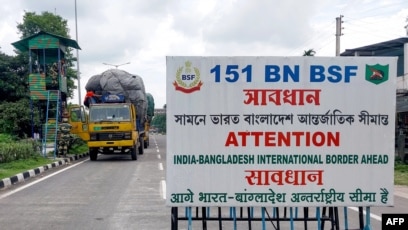
The situation has raised significant concerns among Indian security agencies, who have observed a troubling uptick in border breaches. The migrants typically arrive in India after being deported from the United States, with many having spent years there without legal status. Once deported to Bangladesh, they take advantage of limited border enforcement measures to travel clandestinely across the porous border into India. Experts have highlighted the growing frequency of this phenomenon and its implications for both national security and migration control policies.
The loopholes in US deportation procedures have contributed significantly to this trend. Typically, when migrants are deported, they are returned to their home country, but the protocols in place for monitoring such individuals during their return journeys are limited. Many deportees from the US make use of this lack of oversight, slipping into India where the porous borders between the two countries provide minimal resistance. This trend has become more visible in the past few months, prompting Indian officials to take additional measures to curb the illegal migration.
Though both Bangladesh and India share a lengthy border, the movement of people between the two nations is often facilitated by gaps in security infrastructure, which migrants exploit to move undetected. The problem has escalated as authorities in both countries grapple with the complexities of handling cross-border migration. Despite existing agreements on border security, local dynamics—such as the lack of resources at certain border areas—have enabled this influx.
Security experts have indicated that the ease with which these individuals are able to enter India is linked to insufficient checks on the Bangladesh-India border. The largely rural and dense areas along the border remain vulnerable to smuggling and illegal crossings, as law enforcement resources are stretched thin. While major checkpoints are monitored, smaller, less visible passages have become hotspots for illegal movement. As the situation evolves, these informal routes have been increasingly utilised by migrants looking to avoid detection.
The migrants often use false documentation or even pose as tourists to gain entry to India. This method has made it more difficult for authorities to track and manage the flow of people entering the country. With the vast size of the border area and a limited capacity for surveillance, many individuals have been able to bypass official checks without raising suspicion.
The involvement of middlemen, or "agents," who facilitate these illegal crossings has also been a significant factor in the growth of this illicit movement. These agents operate with a network that stretches across both Bangladesh and India, enabling people to gain access to different parts of India with relative ease. Many of these agents have been involved in the business of human trafficking, capitalising on the vulnerability of deported migrants. The agents often charge exorbitant fees for safe passage, further exacerbating the exploitation of these individuals.
The issue has drawn attention to the broader topic of migration and the complexities involved in controlling cross-border movements. While both Bangladesh and India share a long history of migration, the illegal movement of people has become more pronounced due to evolving global migration patterns and the expansion of digital networks that connect migrants to one another. Technology has allowed individuals to circumvent traditional barriers, creating new challenges for governments attempting to regulate immigration.
India has intensified its efforts to strengthen border security and address illegal immigration, but the sheer scale of the challenge remains formidable. Authorities are now exploring a variety of measures, including increased surveillance, coordination with local law enforcement, and collaboration with Bangladesh to enhance monitoring and enforcement at border areas. However, experts agree that these measures will need to be far-reaching and well-coordinated to effectively reduce the infiltration of illegal migrants.
